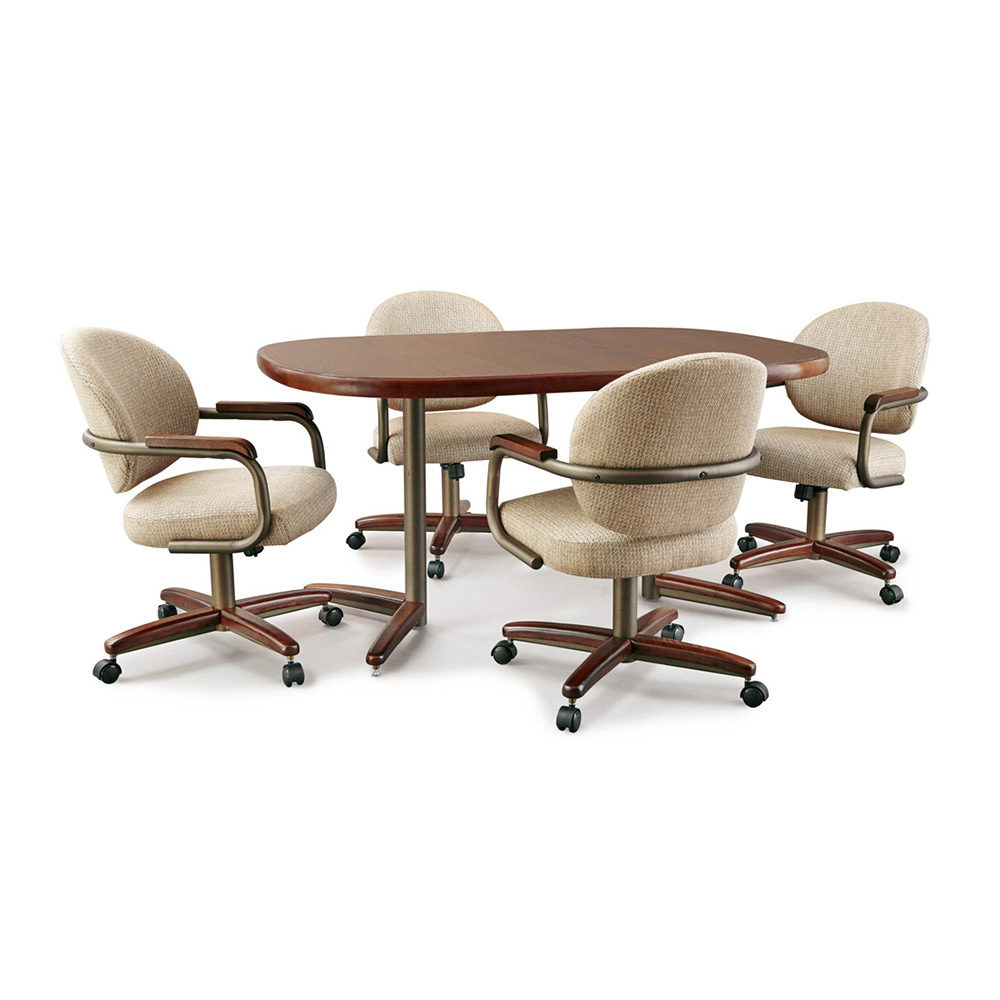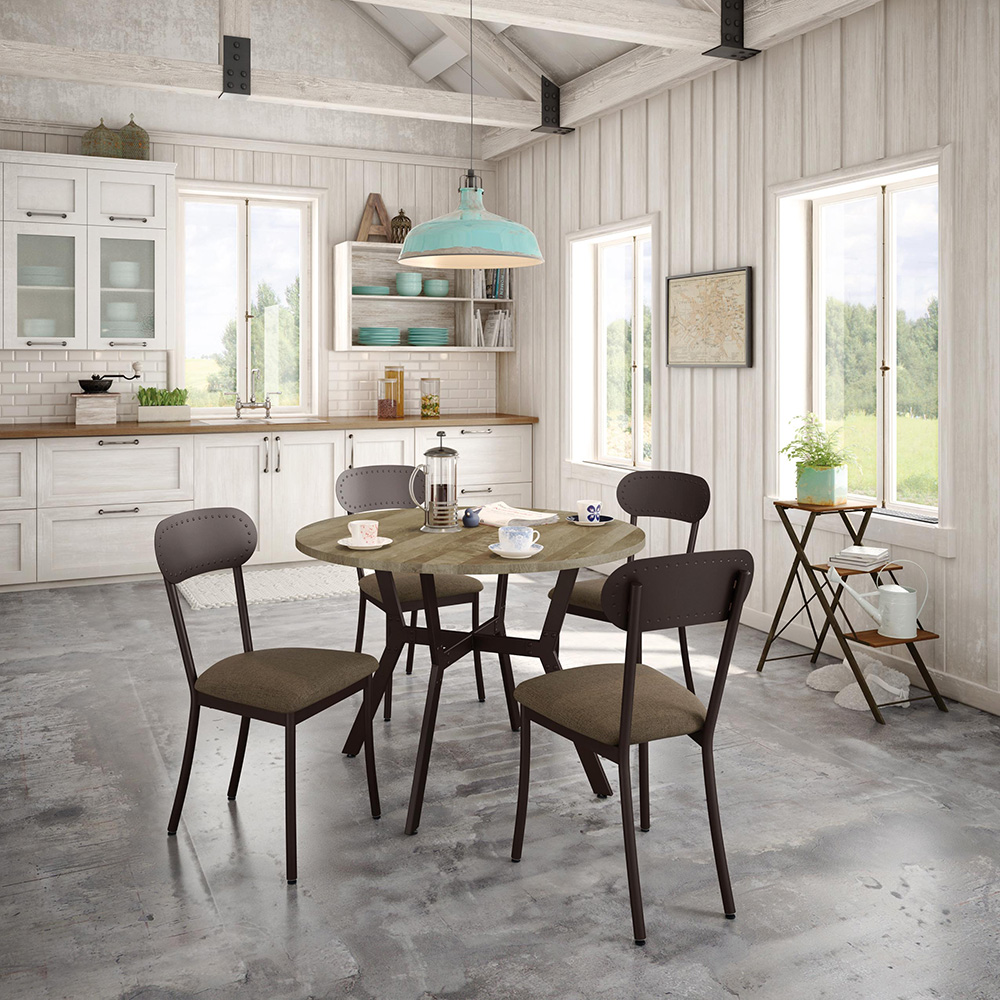When it comes to furnishing your home, selecting the right kind of table for your dining area can be a surprisingly nuanced decision. The differences between a dinette table and dining table are not just about size or style; they reflect different lifestyles, space considerations, and functional needs. Whether you’re moving into a new home or looking to refresh your current space, understanding these distinctions can help you make a choice that best suits your daily life and entertaining style.
Choosing between a dinette and a dining table involves more than just measuring floor space; it’s about creating an environment that reflects your personal style and meets your specific needs. Let’s look at what sets these two types of tables apart, from their design and size to their placement and typical usage. By the end, you’ll be equipped with all the information you need to decide whether a dinette or dining table is the right fit for your home.
What is a Dinette Table?

Before we explore the differences, let’s clarify what we mean by “dinette.” A dinette is typically a small table set, often found in kitchens or small dining areas. It’s designed for casual meals and quick gatherings, offering a cozy and intimate setting. Now, let’s delve into the nuances that distinguish dinettes from traditional dining tables.
Size Matters: Comparing Space and Seating
One of the most apparent differences between a dinette and a dining table is the size. Dinettes are compact and designed to fit into smaller spaces, such as a kitchen nook or a tiny apartment dining area. They typically seat two to four people, making them ideal for everyday meals for small families or couples.
On the other hand, dining tables are larger and designed to accommodate more people. They are meant for more formal dining rooms and can seat anywhere from six to twelve people, sometimes even more with extensions. This makes dining tables suitable for hosting dinner parties, family gatherings, and special occasions.
Style and Design: From Casual to Formal
The design and style of a table can significantly influence the atmosphere of a meal. Dinettes lean towards a more casual, cozy aesthetic, often featuring simple designs that blend seamlessly into kitchen decor. They come in various materials but typically prioritize functionality and space-saving features, such as drop leaves or built-in storage.
Dining tables, conversely, often serve as a focal point of a dining room, with styles ranging from traditional to modern elegance. They are crafted from a wide range of materials, including solid wood, glass, and metal, with design elements that can add a sense of occasion to your meals. The choice between a dinette and dining table can dramatically affect the look and feel of your dining space.
The Heart of the Home: Dinettes in the Kitchen
Dinettes are usually situated in the kitchen or a small, adjacent dining area, making them a central part of daily home life. This location supports their purpose as a kitchen table for quick, informal meals, morning coffee, or a place for kids to do homework under a parent’s watchful eye. The proximity to the kitchen makes dinettes incredibly convenient for meal prep and casual dining.
Formal Dining: A Room of Its Own
Dining tables, with their larger size and more formal aesthetic, are typically placed in a dedicated dining room. This separation from the kitchen underscores the dining table‘s role in hosting more formal meals and gatherings. It provides a space where families and friends can come together, free from the distractions of the kitchen, to enjoy a meal and conversation in a more formal setting.
Versatility and Functionality
While both types of tables serve the primary function of providing a space to eat, their roles in the home can vary. Dinettes, with their compact size and casual nature, are versatile pieces of furniture that can adapt to different needs, from dining to workspaces. In contrast, dining tables are often used for a singular purpose: dining. Their size and formality lend themselves less to everyday casual use and more to special occasions and gatherings.
Cost Considerations
When deciding between a dinette and dining table, budget can be a significant factor. Generally, dinettes are more affordable than large dining tables due to their smaller size and simpler designs. This makes them a popular choice for those furnishing on a budget or with limited space. Dining tables, especially those made from high-quality materials or with intricate designs, can be a significant investment. However, for many, the cost is justified by the table‘s central role in home life and entertainment.
The Final Verdict: What’s Right for Your Home?

The choice between a dinette and a dining table ultimately comes down to your lifestyle, space, and how you intend to use the space. If you live in a small space or value casual, everyday dining, a dinette might be the perfect fit. For those who love hosting and have the room for a more formal dining area, a dining table can create a beautiful, functional space for gathering. Or, why not have both? A dinette set in the kitchen and a dining set in your dining room.
FAQs: Unpacking the Details
- Can a dinetteserve as a formal dining space? While dinettes are typically designed for casual dining, with the right styling, they can be dressed up for more formal occasions. Adding elegant tableware, linens, and lighting can elevate a dinette setting. However, the size may limit the number of guests you can host.
- How do I choose the right size dining tablefor my space? Measure your dining room and allow for at least 3 feet of clearance on all sides of the table to ensure guests can move around comfortably. For dinettes, consider the size of your kitchen or breakfast nook and ensure there’s enough room to move and open adjacent doors or appliances.
- What’s the best material for a dining tableor dinette? The best material depends on your lifestyle and preferences. Wood is durable and offers a warm, classic look but requires maintenance. Glass can create a sense of space and is easy to clean, while metal can offer a modern look and is highly durable.
- How can I make a small dinettefeel more spacious? Choose a table with a slender frame and opt for chairs that can be fully tucked in. Mirrors on adjacent walls can also help to create the illusion of more space, as can a light color palette and good lighting.
- Is it worth investing in a high-quality dining table? If you have the space and enjoy hosting, a high-quality dining table can be a worthwhile investment. Not only does it serve as a centerpiece for gatherings, but well-crafted furniture can last for generations, making it a piece of your family’s history.
